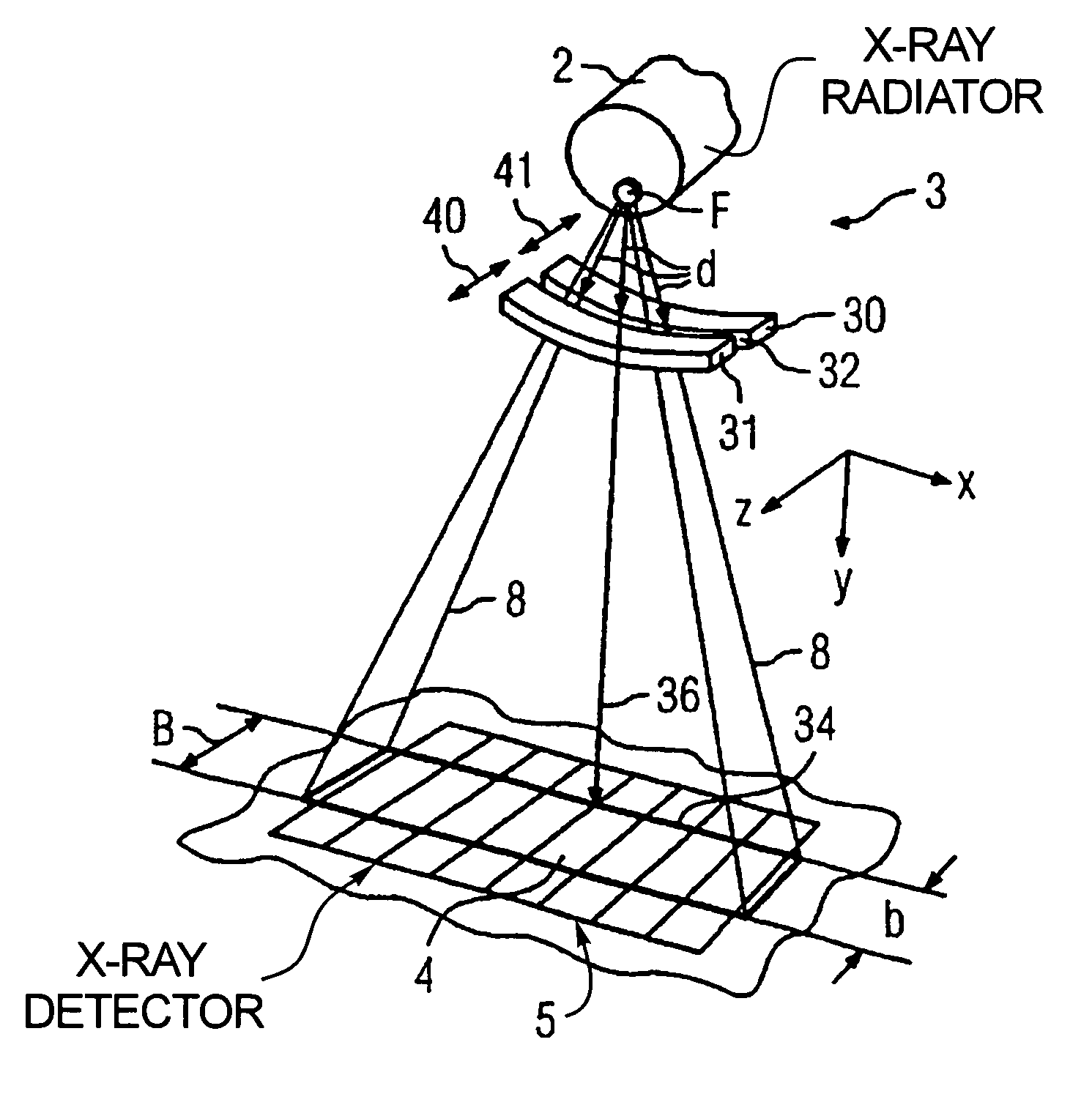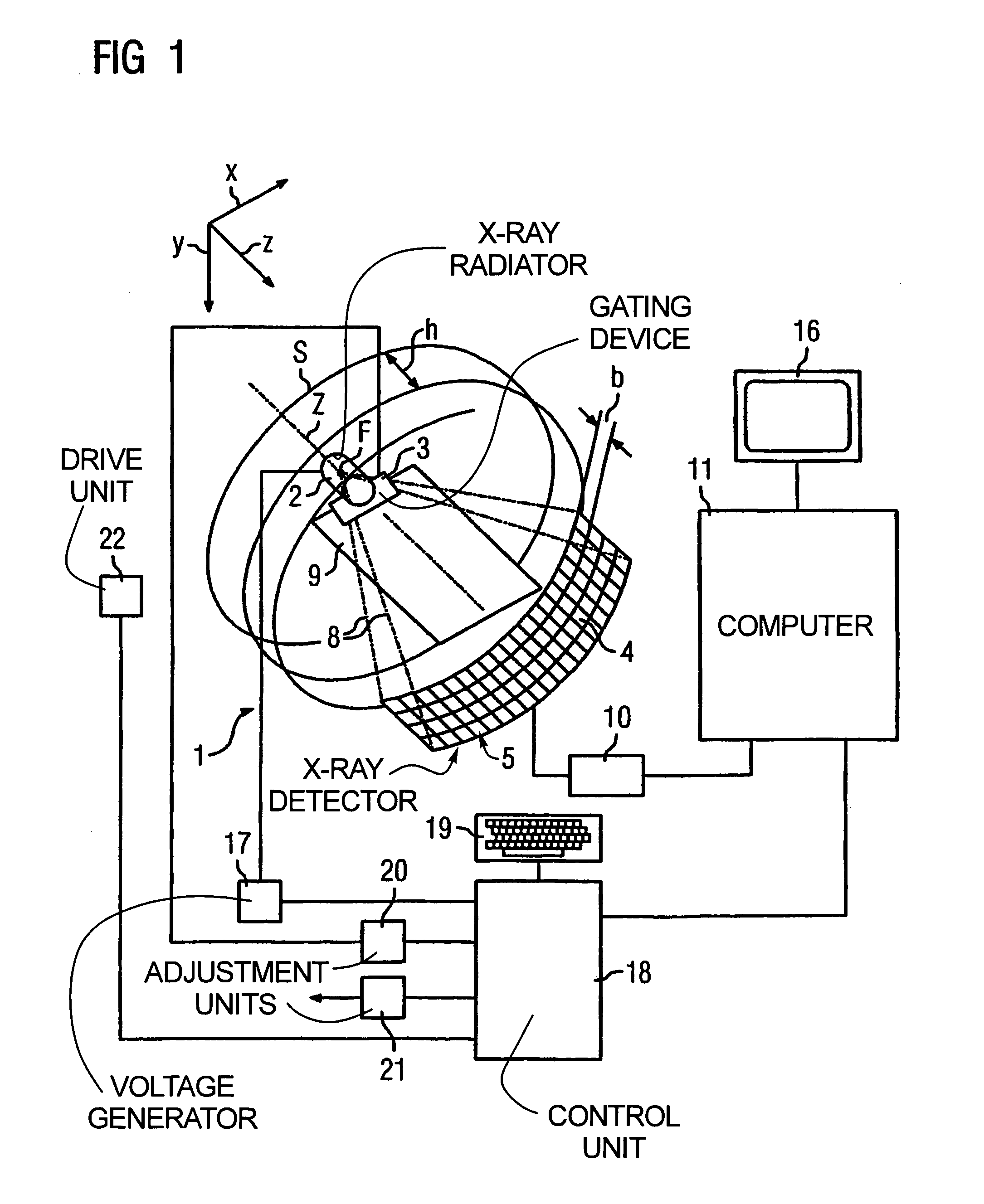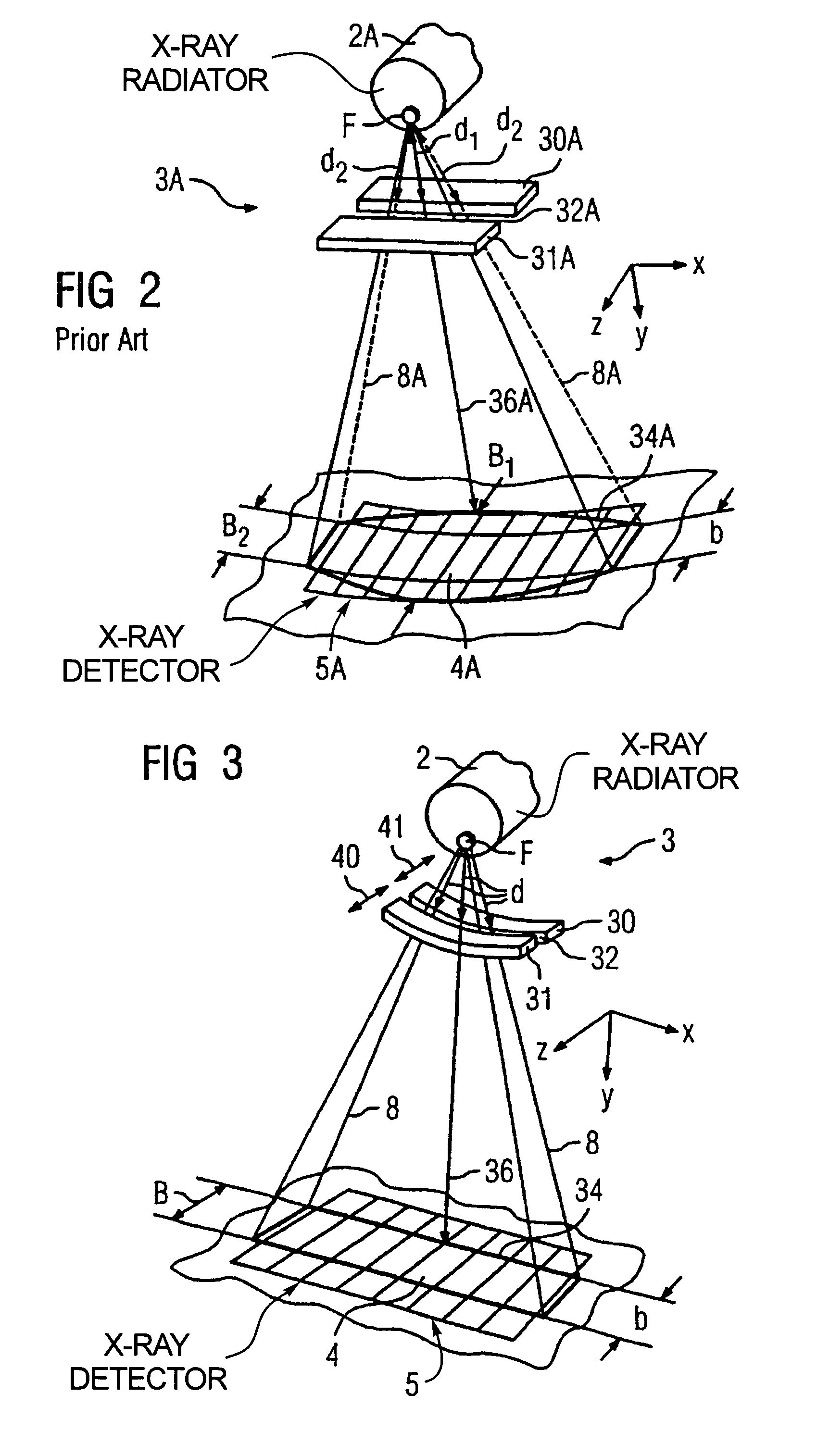Method for operating a computed tomography apparatus having a diaphragm at the radiation detector
a computed tomography and radiation detector technology, applied in the direction of diaphragm/collimeter, instruments, application, etc., can solve the problems of finite number of slits of discrete width, high production cost of bearing bodies curved around two axes,
- Summary
- Abstract
- Description
- Claims
- Application Information
AI Technical Summary
Benefits of technology
Problems solved by technology
Method used
Image
Examples
Embodiment Construction
[0034]A CT apparatus of the third generation is shown in FIG. 1 in section. Its data acquisition arrangement includes an x-ray radiator 2 with a gating device 3 positioned in front of it, near the source, and an x-ray detector 5, fashioned as a laminar array of a number of rows and columns of detector elements (one of these is designated 4 in FIG. 1), with an optional beam diaphragm (not shown) positioned in front of the x-ray detector 5, close to the detector 5. For clarity, in FIG. 1 only four rows of detector elements 4 are shown; however, the x-ray detector 5 can have further rows of detector elements 4, optionally also with different widths b.
[0035]The x-ray radiator 2 with the gating device 3 on one side and the x-ray detector 5 with its beam diaphragm on the other side are mounted opposite one another on a rotary frame (gantry) (not shown), such that a pyramidal x-ray beam emitted by the x-ray radiator 2 in the operation of the CT apparatus 1 and gated by the adjustable gatin...
PUM
 Login to View More
Login to View More Abstract
Description
Claims
Application Information
 Login to View More
Login to View More - R&D
- Intellectual Property
- Life Sciences
- Materials
- Tech Scout
- Unparalleled Data Quality
- Higher Quality Content
- 60% Fewer Hallucinations
Browse by: Latest US Patents, China's latest patents, Technical Efficacy Thesaurus, Application Domain, Technology Topic, Popular Technical Reports.
© 2025 PatSnap. All rights reserved.Legal|Privacy policy|Modern Slavery Act Transparency Statement|Sitemap|About US| Contact US: help@patsnap.com



